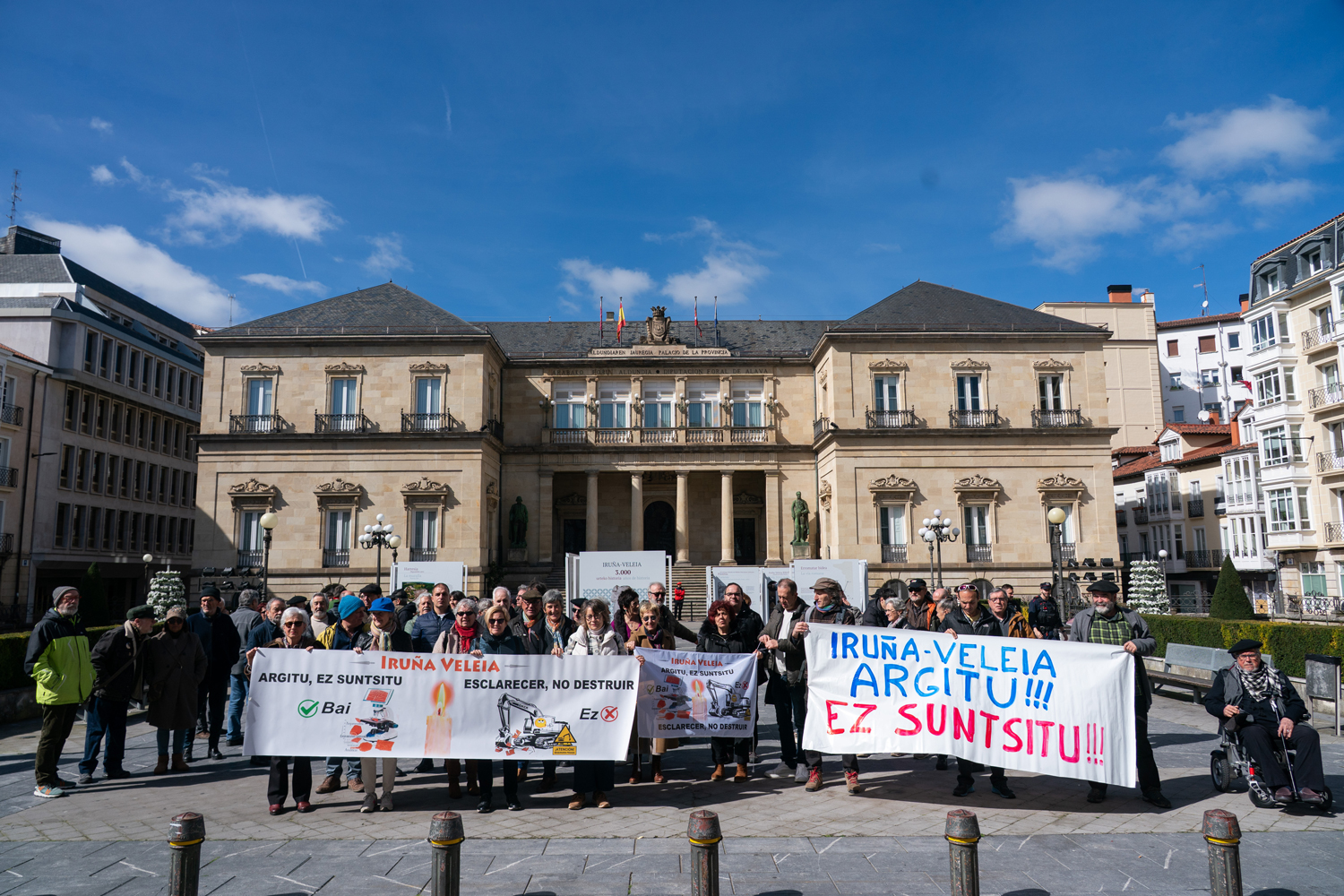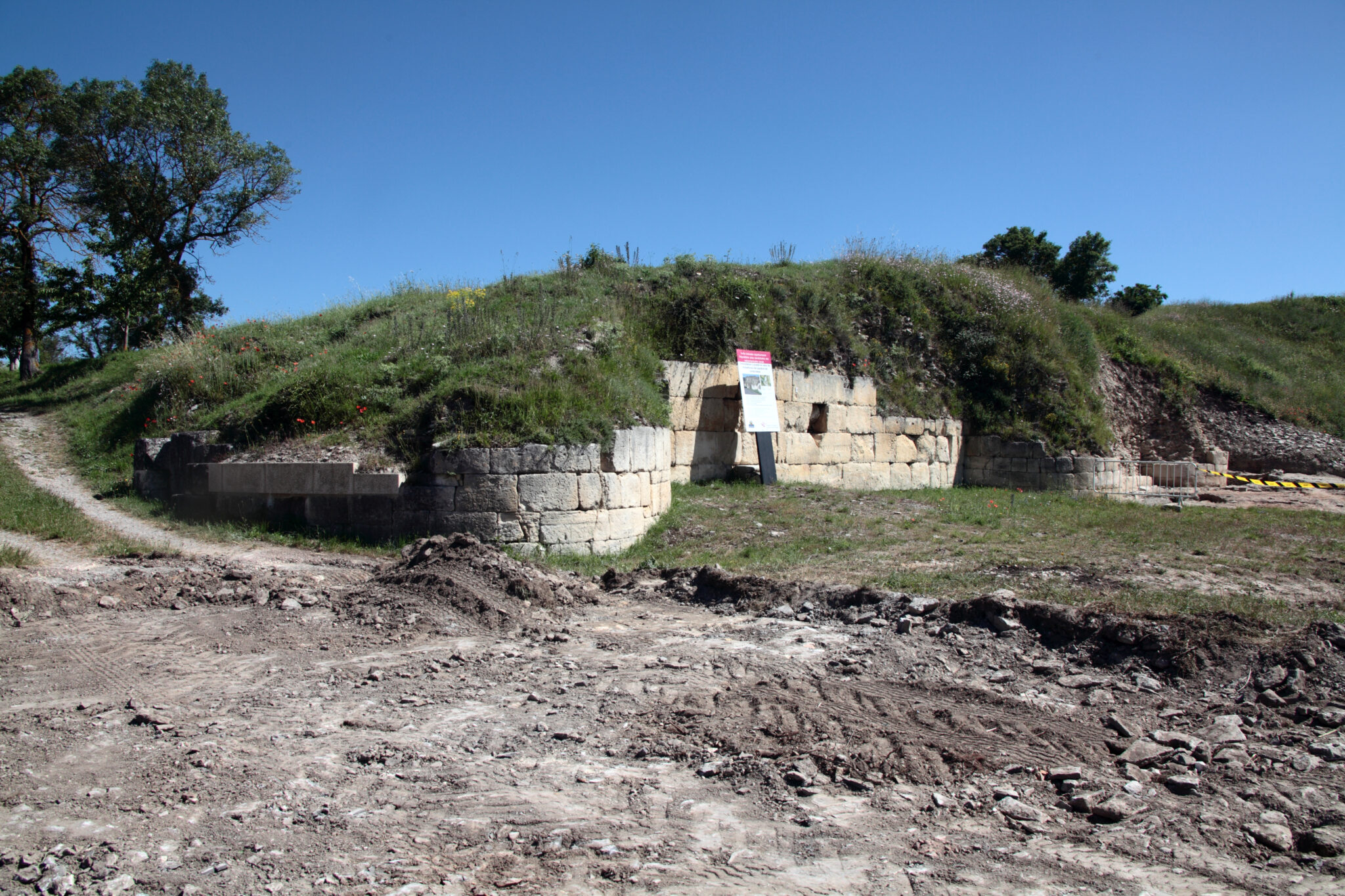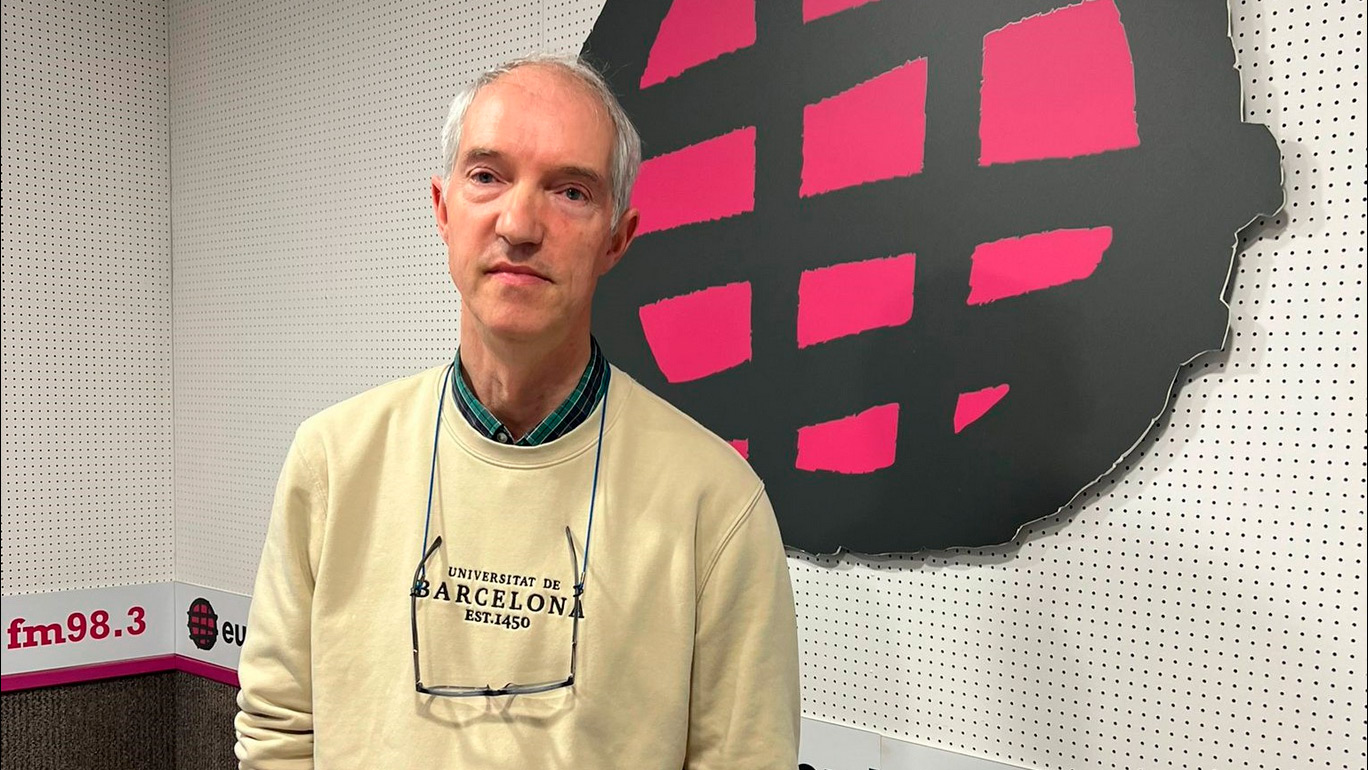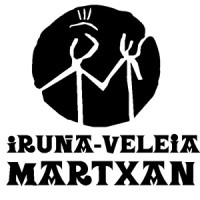Today the trial begins against the graffiti of Iruña Veleia
- In the trial, the defendants face three people. The Prosecutor’s Office and the Provincial Council of Álava accuse them of falsifying graffiti at the Alavés archaeological site of the CAV.

There are three defendants in the case, and the investigation is still open. In the time of the events the director of the site, Eliseo Gil; the archaeologist Oscar Escribano; and the nuclear physicist Rubén Manuel Cerdán. The first two are accused of falsifying some graffiti found on the site, while the physicist is charged with false reports that would prove their truthfulness.
Requests for years in prison
The Prosecutor's Office asks Gil for a five-and-a-half year prison sentence for a continued crime against historical heritage and another for private document fraud. The Member's request is seven and a half years, since the previous accusations are accompanied by a continuing crime of damage and fraud. The Deputation requests three years and nine months in jail for the archaeologist Escribano, charged with a crime of damage to cultural heritage. The Prosecutor’s Office raises the petition to five and a half years, considering that he is also charged with a crime of scam. The Deputy asks for three years and nine months in jail for Cerdan's physicist, and the prosecutor's office asks for two years and six months in jail for a scam crime.
Origins of Euskera
In the years 2005 and 2006, the company Lurmen, which was analysing the archaeological site of Iruña Veleia, made several graphites known. The stories sounded. The graphites were written on ceramic pieces, from which it can be deduced that in the third century the Basque was spread around. Accusations of fraud arose and opinions and attitudes towards and against fraud have since multiplied.
Prior to the trial, on February 1, the members of the Iruña Veleia Argitu platform carried out a bicycle ride in Vitoria-Gasteiz and concentrated before the court in Vitoria-Gasteiz under the motto “No science, no justice!”. The platform alleges that the defendants are innocent and calls for more scientific evidence to determine whether or not the pieces are false, according to the same source.
Otsailean bost urte bete dira Iruña-Veleiako epaiketatik, baina oraindik hainbat pasarte ezezagunak dira.
11 urteko gurutze-bidea. Arabako Foru Aldundiak (AFA) kereila jarri zuenetik epaiketa burutzera 11 urte luze pasa ziren. Luzatzen den justizia ez dela justizia, dio... [+]
Martxoaren 30erako Iruña-Veleia martxan, SOS Iruña-Veleia eta Euskeraren jatorria elkarteek manifestaziora deitu dute, Aski da! Argitu, ez suntsitu lelopean. Azken bi urteetan "hondeatzaileak sistematikoki eremu arkeologiko oso aberatsak suntsitzeko modu... [+]
Urriaren 26an Iruña-Veleia Argitu, ez suntsitu jardunaldian Zenbat esku daude Iruña-Veleian aurkitutako ostraken testuetan? ponentzia aurkeztu zuen Joseba Lizeagak
“It’s been 18 years since some 400 graffiti appeared on the excavation, 16 years since he was expelled from the excavation camp of Lurmen without scientific evidence and 4 years since the trial was held without clarifying the subject, we can say that we continue to... [+]
In June 18 years ago we started to get to know the paintings of Iruña Veleia. Good news for the Basques.
But the current situation is not so satisfactory. On the one hand, the Provincial Council of Álava (DFA) says that all graphites are false, and that those who think... [+]
As we have known, Joaquín Gorrochategui has been awarded the Euskadi Research Award 2023. SOS Asturias-Veleia hereby expresses its disagreement and discomfort. In our opinion, the deplorable role played by the professor in the Asturias-Veleia case leaves out the merits he can... [+]
When we join archeology and site, an image of several people sitting on the ground will come to us, raising and cleaning the ground with palettes or brushes, welcoming the surrounding spaces with rope, some wheelbarrow and sieve, meter… We have seen it in Irulegi and Iruña... [+]
At the end of the year it is usual to review last year. I want to do something like this with the 4,500 characters offered by ARGIA on Iruña Veleia (hereinafter I-V). From time to time I have inserted several writings and videos into quotation marks to check them online with... [+]
The trial took place in Vitoria from 3 to 19 February 2020. Days before P.A. The journalist sent Berria the sense article Sugetzarra. It ended as follows:
"You have to see what makes judgment. In any case, it is sad that everything is then turned over; disappointing, the games... [+]
Because you have fulfilled newspapers, magazines, televisions, radios and social networks ‘Sorioneku’, and all in your honor. The graffiti by Iruña Veleia was not so lucky.
He found me ‘Sorioneku’ L.M. excavator. Those of Iruña Veleia were dismissed as... [+]
As you know, Eliseo Gil Zubilwaukee, former director of the archaeological site of Iruña Veleia, was convicted of falsifying graffiti by a criminal court in Vitoria-Gasteiz in 2020. The defendant was sentenced to two years and three months in prison and several sentences of up... [+]
In February the human skeleton of 12,000 years found in a cave of Loizu (Merindad de Sangüesa) was presented; this month the mammoth bones of 30,000 years found in the cave of Isturitze, in Donamarti (Baja Navarra).
This newspaper has provided excellent information on two... [+]
Yesterday the Hearing’s response to the Iruña–Veleia ruling by Lurmen was known. As this is a state matter, and as in all other Spanish State matters, they have reassured the administration, against citizenship; that is, they have not even taken into account Lurmen’s... [+]













